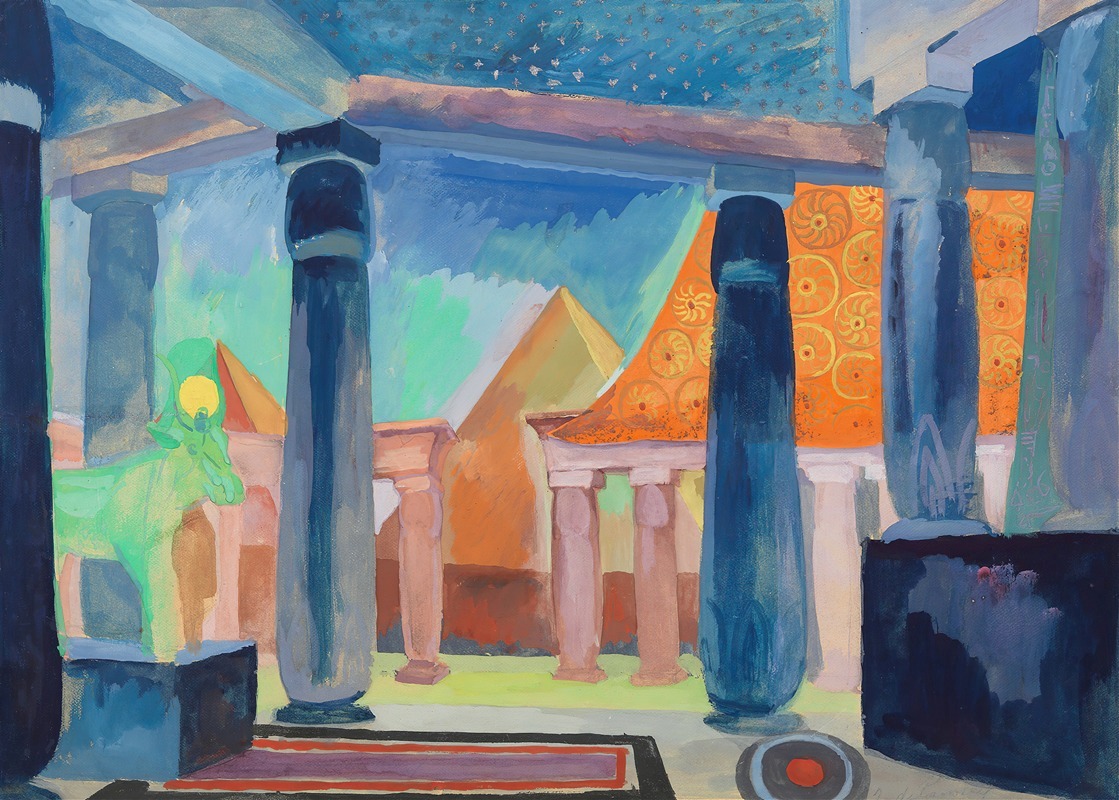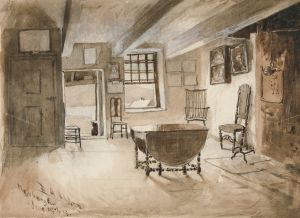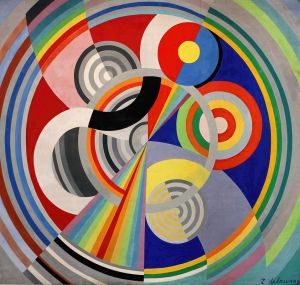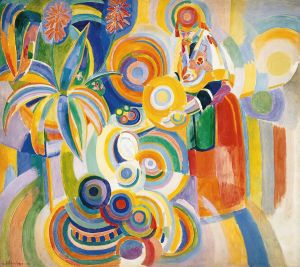
Stage Design for Cleopatra Object
A hand-painted replica of Robert Delaunay’s masterpiece Stage Design for Cleopatra Object, meticulously crafted by professional artists to capture the true essence of the original. Each piece is created with museum-quality canvas and rare mineral pigments, carefully painted by experienced artists with delicate brushstrokes and rich, layered colors to perfectly recreate the texture of the original artwork. Unlike machine-printed reproductions, this hand-painted version brings the painting to life, infused with the artist’s emotions and skill in every stroke. Whether for personal collection or home decoration, it instantly elevates the artistic atmosphere of any space.
Robert Delaunay was a prominent French artist known for his contributions to the Orphism art movement, which is characterized by its use of strong colors and geometric shapes. One of his lesser-known works is the "Stage Design for Cleopatra Object," which reflects his interest in combining art with theatrical elements. This piece is a testament to Delaunay's exploration of color theory and abstraction, which were central to his artistic philosophy.
Delaunay's work in stage design was part of a broader trend in the early 20th century where artists sought to break down the barriers between different art forms. This was a period when many visual artists were collaborating with theater productions, bringing their unique perspectives to stage design. Delaunay's involvement in stage design allowed him to experiment with the spatial dynamics of color and form in a three-dimensional context, which was a natural extension of his painting practice.
The "Stage Design for Cleopatra Object" was created during a time when Delaunay was deeply engaged with the avant-garde movements in Paris. His work was influenced by the vibrant cultural exchanges happening in the city, where artists, writers, and performers were pushing the boundaries of traditional art forms. Delaunay's designs often featured bold, circular forms and a vivid color palette, elements that were likely present in his stage design for Cleopatra.
Delaunay's approach to stage design was innovative in that it sought to create an immersive experience for the audience. By using abstract forms and dynamic colors, he aimed to evoke emotions and convey a sense of movement and energy. This approach was consistent with his paintings, where he often used color contrasts and geometric shapes to create rhythm and harmony.
The collaboration between Delaunay and the theater world was mutually beneficial. For Delaunay, it provided an opportunity to apply his theories of color and form in a new medium, while the theater benefited from his fresh and modern aesthetic. His work in stage design is a reflection of his belief in the synthesis of art and life, where art is not confined to the canvas but extends into the spaces we inhabit.
Unfortunately, specific details about the "Stage Design for Cleopatra Object" are scarce, and it is not widely documented in art historical literature. However, it is clear that this work is part of Delaunay's broader exploration of how art can transform and enhance the theatrical experience. His contributions to stage design are an important, though often overlooked, aspect of his artistic legacy.
In summary, Robert Delaunay's "Stage Design for Cleopatra Object" exemplifies his innovative approach to art and his commitment to exploring the interplay between color, form, and space. While detailed information about this specific work is limited, it remains an intriguing example of how Delaunay applied his artistic principles beyond the canvas, influencing the world of theater with his visionary designs.














